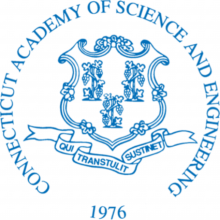Hartford, CT – District energy systems, waste heat enterprise zones and algae farms are among the options that Connecticut should pursue to utilize waste heat from electric power generating stations, according to a recent study by the Connecticut Academy of Science and Engineering (CASE). CASE briefed the Connecticut Energy Advisory Board (CEAB) Friday on the findings of the study, which CEAB commissioned last September.
The study, entitled, The Feasibility of Utilizing Waste Heat from Central Electric Power Generating Stations and Potential Applications, came about due to concern that facilities that utilize once-through cooling systems may be required to install new cooling technologies that minimize thermal releases and impact on fisheries, as required by the federal Clean Water Act. This study’s objective was to evaluate the trade-off between the cost of installing a new cooling water system versus using that investment to increase the thermal efficiency of a facility (i.e., reducing or utilizing waste heat) while reducing overall environmental impact.
According to the study, the total heat currently being rejected from Connecticut’s power plants is roughly equal in value to all of the fossil fuels used for the state’s residential, commercial, and industrial sectors for process and space heating – a cost of $3.8 billion.
Connecticut’s power plants transform energy stored in nuclear and chemical fuels, with roughly one-third being converted into useful energy and two-thirds being rejected as heat, due to the fundamental physical laws associated with the power generating process. That heat is rejected into the atmosphere or bodies of water.
However, proven combined heat and power (CHP) technologies — in use in the United States and Northern Europe — can be utilized to capture rejected heat for useful purposes; and, the CASE study says, will pave the path towards energy independence and security by reducing dependence on fossil fuels, while creating jobs and providing economic benefits, as well as improving the environment and energy efficiency.
Although rejected heat is plentiful and readily available, the CASE report notes, it is not at conditions suitable for distribution and high-value end use. These conditions are a result of striving for maximum electrical efficiency, a goal arising from current practices and regulations that is based on limited thinking of energy as disparate forms (electricity, natural gas and heating oil), CASE contends, rather than considering all forms of energy as an integrated whole. Modification of existing plants would be required to achieve beneficial use of rejected heat and CASE recommends that new plants be designed with heat use as a consideration.
The CASE study committee examined various uses for waste heat and developed the following recommendations for Connecticut:
- Develop district energy (heating and cooling) systems in high population/employment areas
- Create Waste Heat Enterprise Zones to encourage economic development
- Explore the potential for growing algae for generating biofuel from fossil fuel stack gases, or cooling water reject heat.
The study concludes that the potential for beneficial use of power plant rejected heat is significant. The challenge for Connecticut, the study contends, is not technical but requires a paradigm shift in the state’s energy policy and planning—to consider all energy forms/sectors (electricity, natural gas and heating oil) along with their impacts on the environment and economic development
holistically.
The CASE report recommends initial policy changes that include requiring new facilities to integrate electricity and thermal generation into their design and operation; providing that facilities that convert to a CHP mode of operation or new CHP plants and utilities be allowed to pursue long-term purchase contracts for selling electricity to the grid or to each other and providing Class I or Class II renewable energy credits for use of rejected heat from electricity generating facilities that otherwise would have been discharged into the atmosphere or a water body.
“The question can no longer be how do we best dispose of the waste heat,” writes CASE, “but how the facilities can be best designed (new or retrofitted) to beneficially use the rejected heat.”
###

